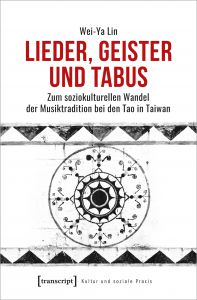Wei-Ya Lin: Lieder, Geister und Tabus: Zum soziokulturellen Wandel der Musiktradition bei den Tao in Taiwan [Songs, Spirits, and Taboos: On the Sociocultural Transformation of Musical Tradition among the Tao in Taiwan], 2021, Bielefeld, tanscript.

This newly published dissertation (2015) by Wei-Ya Lin promises insights into the “holistic musical concept” of an indigenous population known as the Tao on Lanyu (one of the islands of Taiwan) “that is inseparably interwoven with all areas of life”. This expectation is fulfilled in the book’s third chapter, which begins with an analysis of the types of melodies to be found in individual singing and an explanation of the principles of polyphonic singing in traditional Tao music. In the life of the Tao, however, “music” essentially means “singing” in the sense of a social practice (p. 11)—for which reason this traditional repertoire interacts in a certain sense with music such as confessionally distinct church hymns practised on Lanyu by natives of other lands. Expended contexts of singing likewise play a role, such as in cases where songs from other languages or new cultures of singing such as karaoke have become present.
Lin, however, goes beyond what is to be expected in an academic dissertation: what is special about her study is how she, as a researcher, experienced more-or-less first-hand how such external cultural influences articulate themselves directly in Tao life. This becomes quite evident in her report on how, following her initial audio documentation, questions voiced by her translator clued her in to how he thought her recordings should be regarded as unsuccessful on account of the fact that the singers—presumably in an effort to provide her with the perfect recording—had sung incomplete versions of some songs and also engaged in discussion in the process (p. 51f). Lin, as a researcher, had thus herself become a factor that altered the Tao’s “life in singing”. It will have been such experiences that sharpened Lin’s keen awareness of this problem and enabled her to mediate between the musical culture she was researching and academic cultures of research.
Having read the entire book, one is left with just one wish: to experience a hypothetical “movie adaptation”. Research on music is typified by its descriptions of audible material via the written word. Occasionally, CDs are included in order to illustrate what is verbally described. But in Wei-Ya Lin’s case, an opportunity arose in Taiwan to develop two artistic projects on the basis of her dissertation project and realise them onstage (2016) and in concert (2021). Audio-visual documentation of these would therefore be an impressive supplement for all those who lack the opportunity to make the trip themselves.

